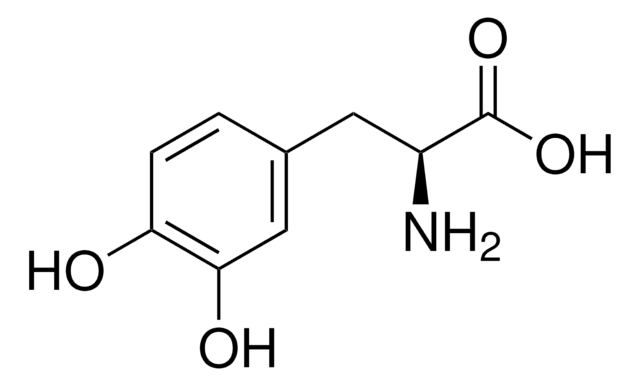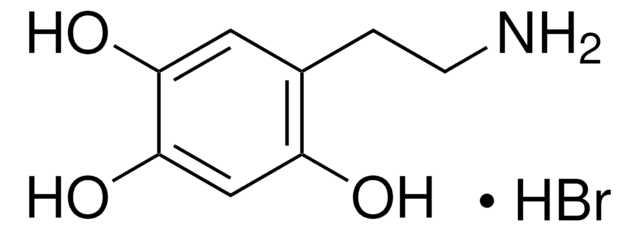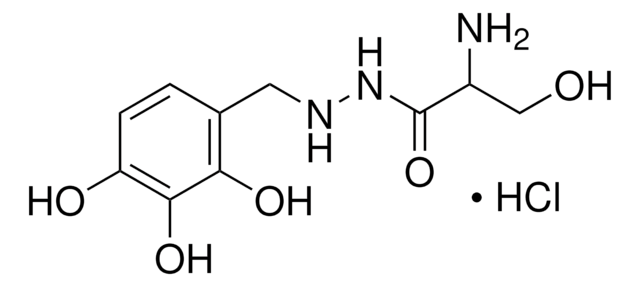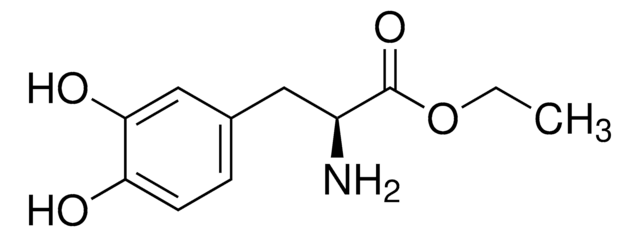H2380
6-Hydroxy-DL-DOPA
≥98% (HPLC), powder, APE1 inhibitor
Synonym(s):
2,4,5-Trihydroxy-DL-phenylalanine, 2,5-Dihydroxy-DL-tyrosine
About This Item
Recommended Products
Product Name
6-Hydroxy-DL-DOPA, ≥98% (HPLC), powder
Quality Level
Assay
≥98% (HPLC)
form
powder
color
off-white
solubility
H2O: 3 mg/mL
1 M HCl: 50 mg/mL (Solutions should be freshly prepared and protected from exposure to light.)
storage temp.
−20°C
SMILES string
NC(Cc1cc(O)c(O)cc1O)C(O)=O
InChI
1S/C9H11NO5/c10-5(9(14)15)1-4-2-7(12)8(13)3-6(4)11/h2-3,5,11-13H,1,10H2,(H,14,15)
InChI key
YLKRUSPZOTYMAT-UHFFFAOYSA-N
Looking for similar products? Visit Product Comparison Guide
Related Categories
General description
Biochem/physiol Actions
Packaging
Caution
Storage Class Code
11 - Combustible Solids
WGK
WGK 3
Flash Point(F)
Not applicable
Flash Point(C)
Not applicable
Personal Protective Equipment
Choose from one of the most recent versions:
Already Own This Product?
Find documentation for the products that you have recently purchased in the Document Library.
Our team of scientists has experience in all areas of research including Life Science, Material Science, Chemical Synthesis, Chromatography, Analytical and many others.
Contact Technical Service




